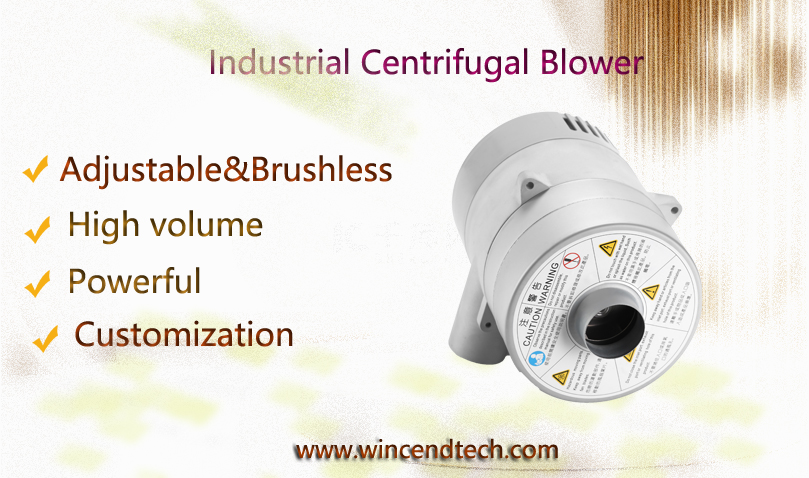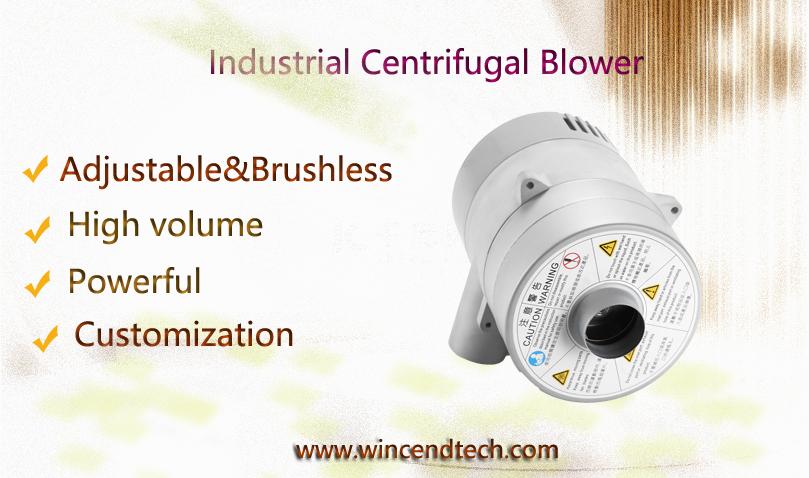Industrial hot air blower equipment plays a crucial role in various manufacturing and processing industries, providing a reliable source of heated air for drying, heating, and other applications. Equipped with robust motors and high-performance heating elements, these machines are built to withstand the rigorous demands of continuous industrial use, delivering reliable performance and consistent results. The versatility and adaptability of WinCend industrial hot air blower equipment make them indispensable assets for maintaining optimal production conditions and enhancing overall process efficiency across diverse industrial sectors.

Technical Characteristics
1. High-Efficiency Heating Systems
Industrial hot air blowers are equipped with advanced heating systems that ensure rapid and efficient heat generation. These systems often utilize electric heaters, burners, or heat exchangers to achieve the desired temperature range, typically spanning from ambient to several hundred degrees Celsius. The use of high-quality materials and precision engineering guarantees minimal heat loss and optimal energy utilization.
2. Powerful Blowing Capabilities
Equipped with robust fans or centrifugal blowers, industrial hot air blowers deliver a high volume of heated air at controlled velocities. The design of these blowers ensures that the airflow is evenly distributed, making them suitable for large-scale operations where uniform heating is crucial. Adjustable fan speeds and airflow controls further enhance their versatility.
3. Precision Temperature Control
Precision temperature control is a hallmark of industrial hot air blowers. Advanced thermostats and sensors monitor and regulate the temperature in real-time, maintaining it within tight tolerances. This feature is particularly beneficial in applications where precise temperature control is essential, such as in material curing, drying, and annealing processes.
4. Durability and Reliability
Constructed from heavy-duty materials, industrial hot air blowers are designed to withstand the rigors of continuous industrial use. Corrosion-resistant coatings and rugged designs ensure long service life and minimal downtime. Regular maintenance and inspection schedules contribute to their overall reliability and performance.
5. Compact and Modular Design
Despite their powerful capabilities, industrial hot air blowers are often designed with compactness in mind. Modular components allow for easy installation, maintenance, and upgrades. This design flexibility also facilitates integration into existing production lines and systems without significant modifications.
Advantages
1. Enhanced Production Efficiency
The ability to rapidly heat and distribute air uniformly across large areas significantly enhances production efficiency. Industrial hot air blowers enable faster drying, heating, and curing times, reducing overall processing cycles and boosting throughput.
2. Energy Savings
High-efficiency heating systems and precise temperature control mechanisms contribute to significant energy savings. By minimizing heat loss and optimizing energy use, these blowers reduce operational costs and lower the carbon footprint of industrial processes.
3. Versatility in Applications
Industrial hot air blowers find applications across a wide range of industries, including automotive, electronics, food processing, and textiles. Their versatility stems from their ability to adapt to different temperature requirements, airflow needs, and operational environments.
4. Improved Product Quality
Precise temperature control and uniform airflow distribution are critical for maintaining consistent product quality. Industrial hot air blowers ensure that materials are heated evenly, preventing warping, discoloration, or other defects that can compromise product integrity.
5. Easy Maintenance and Operation
The modular design of industrial hot air blowers simplifies maintenance tasks, making it easier to access and replace worn-out components. User-friendly control panels and automated monitoring systems further streamline operation, reducing the need for specialized training and minimizing human error.
6. Scalability and Customization
The scalability of industrial hot air blowers accommodates growing production demands. Manufacturers can add additional units or upgrade existing systems to meet increased capacity requirements. Customization options, such as specific airflow patterns, heating elements, and control systems, tailor the equipment to unique process needs.
Conclusion
Industrial hot air blower equipment combines advanced technical characteristics with numerous operational advantages, making it an indispensable asset in various manufacturing and processing industries. From high-efficiency heating and powerful blowing capabilities to precision temperature control and durability, these devices offer a comprehensive solution for heating and drying applications. Their versatility, energy efficiency, and ease of maintenance further solidify their position as a cornerstone of modern industrial production. As industries continue to evolve, the technical advancements and innovative features of industrial hot air blowers will undoubtedly play a pivotal role in driving efficiency, quality, and sustainability.

